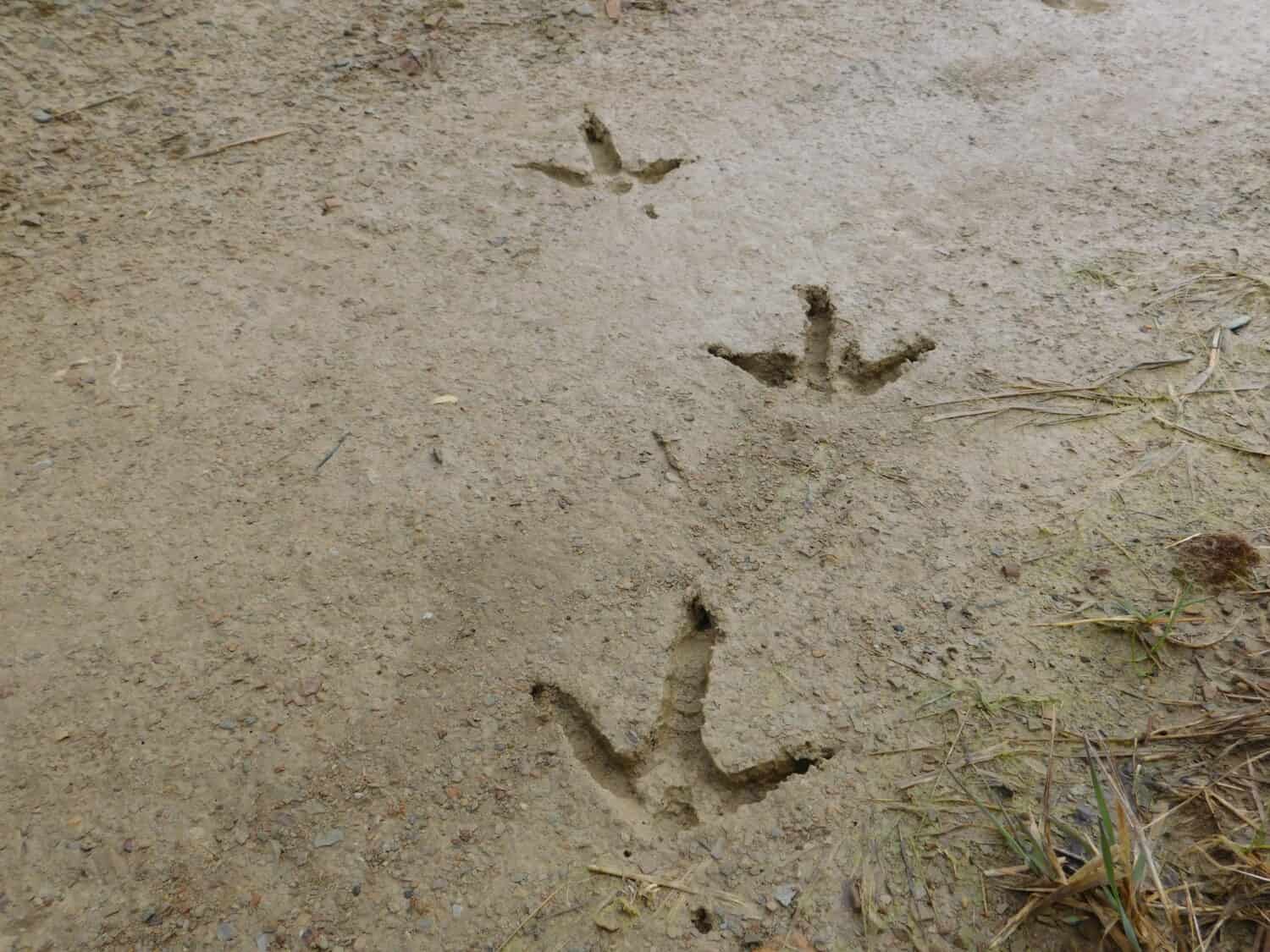Wild turkeys are large game birds found throughout much of North America While wild turkeys themselves are easy to identify, their tracks can be a bit more challenging to recognize. However, with some knowledge of turkey track characteristics, you can learn to identify wild turkey tracks in the wild.
Size and Shape of Turkey Tracks
One of the easiest ways to identify wild turkey tracks is by their large size. Turkey tracks typically measure between 3 3/4 to 5 inches long and 4 to 5 1/2 inches wide. They are much larger than other common upland game bird tracks, like grouse or quail.
The overall shape of a turkey track is round or heart-shaped with three prominent toes facing forward and a smaller rear toe facing backward that often just leaves a claw impression. The three forward-facing toes are bulbous at the tips. This gives the turkey tracks a distinctive rounded blunt-toed look compared to the more pointed toe tips of many other birds.
When examining turkey tracks, look for the size and rounded shape with prominent front toes and small back toe to distinguish them from other large bird tracks like herons or cranes that may overlap in size. Turkey tracks are identifiable from other common game birds like grouse and quail once you recognize their large size and blunt, rounded toes.
Track Patterns
Looking at the patterns of tracks can also help identify them as wild turkey. Turkeys either leave tracks of the two feet side-by-side or alternating feet when walking. Tracks will fall in a straight or meandering line as the turkey walks along searching for food.
Often, the tracks of one foot will partially overlap the other, obscuring the foot impressions. Check for tracks that follow each other in a line, looking for the distinctive shape of individual toe and claw impressions that overlap to confirm you are looking at turkey tracks.
Turkey track patterns differ from many ground birds that hop along on both feet simultaneously, leaving side-by-side, paired tracks. While turkeys can leave paired tracks when standing, look for the tell-tale alternating left-right or right-left track pattern when they are walking to help distinguish turkey tracks.
Substrate
Turkeys leave tracks in a variety of substrates, including mud, snow, and dry ground. Track appearance varies across these substrates.
In mud or snow, tracks will be crisp and clear, with well-defined toes and claws. All four toes often register clearly. Upland game birds like grouse may leave similar neat tracks in mud or snow, so look at the size and rounded shape of toes to identify the turkey tracks.
Tracks left in dry, dusty ground may be less distinct, often just leaving the impression of the large rear and three front toes. Look for the overall size, rounded shape, and classic asymmetric three-forward, one-back toe arrangement to identify dry turkey tracks.
Behavioral Signs
Other signs nearby turkey tracks can further indicate the presence of turkeys. Look for disturbed leaf litter, feathers, and signs of foraging like digging holes or scratch marks where turkeys have been searching for food. Droppings may also be found along their path.
During mating season, male turkeys may leave signs like dustypatches where they have been strutting and fanning their wings and tail to attract females. Also listen and watch for wild turkeys near suspected tracks, as their gobbling and visual presence is a sure confirmation that you’ve found wild turkey sign.
Identifying Turkey vs Other Species
With their large size and characteristic shape, turkey tracks are unique and fairly easy to identify once you know what to look for. However, they may resemble some other species in certain substrates or conditions. Here are some key ways to distinguish wild turkey tracks from other birds:
-
Pheasant and quail tracks are much smaller with a more elongated, teardrop shape compared to the turkey’s rounded, bulbous toes.
-
Herons and cranes leave thinner, more symmetrical tracks with long toes lacking the turkey’s blunt, bulbous toe tips. The rear toe also usually registers clearly.
-
Grouse tracks can approach the size of turkeys but have a thinner, pointed toe impression vs the wider, blunter toes of turkeys.
-
Turkey vultures have a similar three-forward, one-back toe arrangement but make a lighter impression with thin toes.
With their distinctive size, shape, and asymmetry, wild turkey tracks stand out from other birds once you learn their unique characteristics. Carefully studying and measuring any tracks suspected to be from wild turkeys will help confirm the identification based on size, proportions, and impressions of the toes and claws. With practice, you will be able to readily recognize wild turkey tracks when you encounter them in the field.

Scouting is the easiest way to make sure there are turkeys in the area we intent to hunt.
Look for tracks, droppings, dusting sites, strut marks, scratching and maybe, if you are lucky, a few dropped feathers.
Of all the signs turkeys leave, tracks are found must often. Turkeys walk just about everywhere, so they leave tracks in the sand, soft dirt, snow, mud, and even defrosting ground. Tracks are not always obvious. Complete and partial tracks, such as the imprint of a toe, are easy to miss.
How to Find and Read Turkey Tracks
FAQ
How do you identify a turkey track?
How big are wild turkey tracks?
What do wild turkey footprints look like?
How do you identify a wild turkey?
